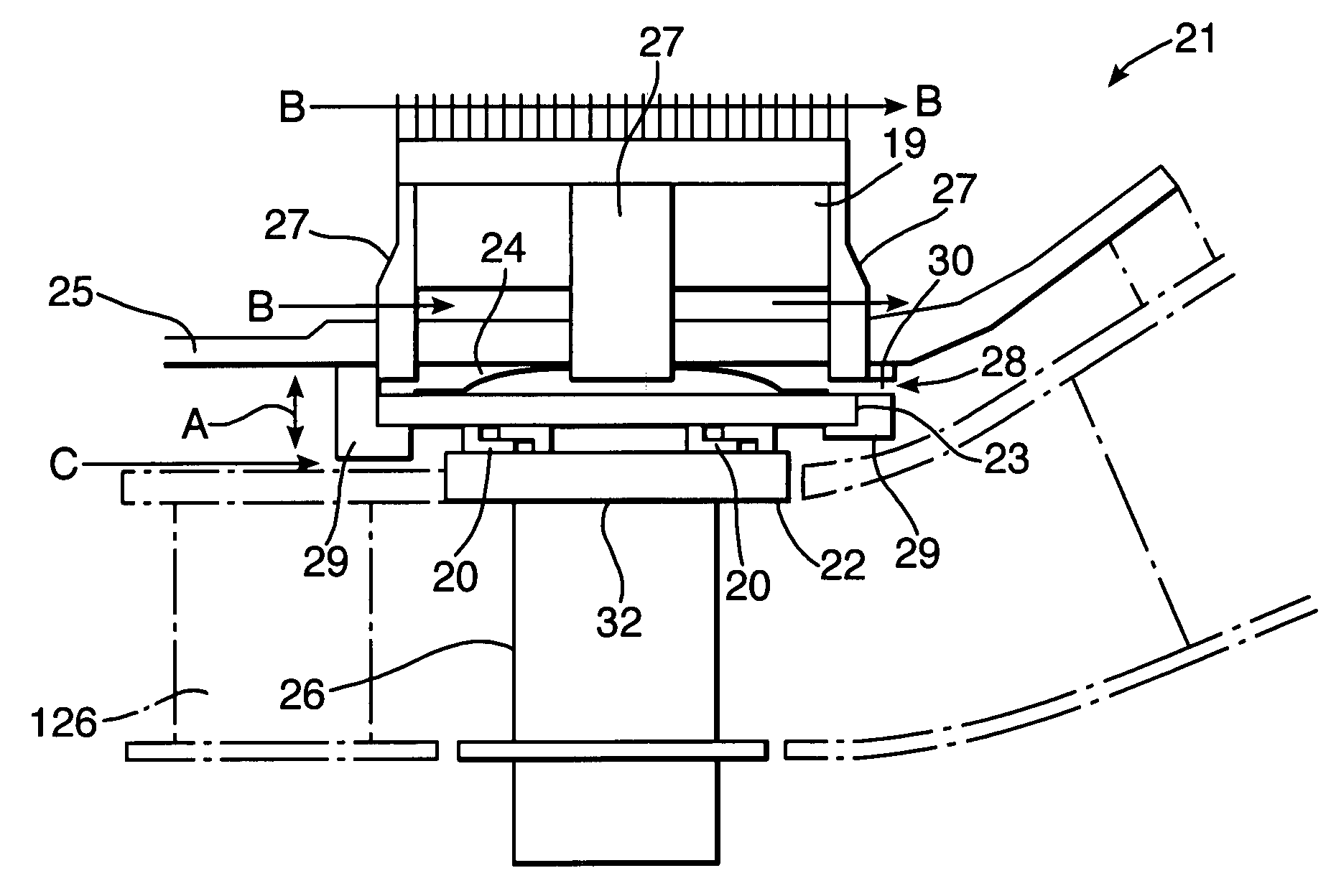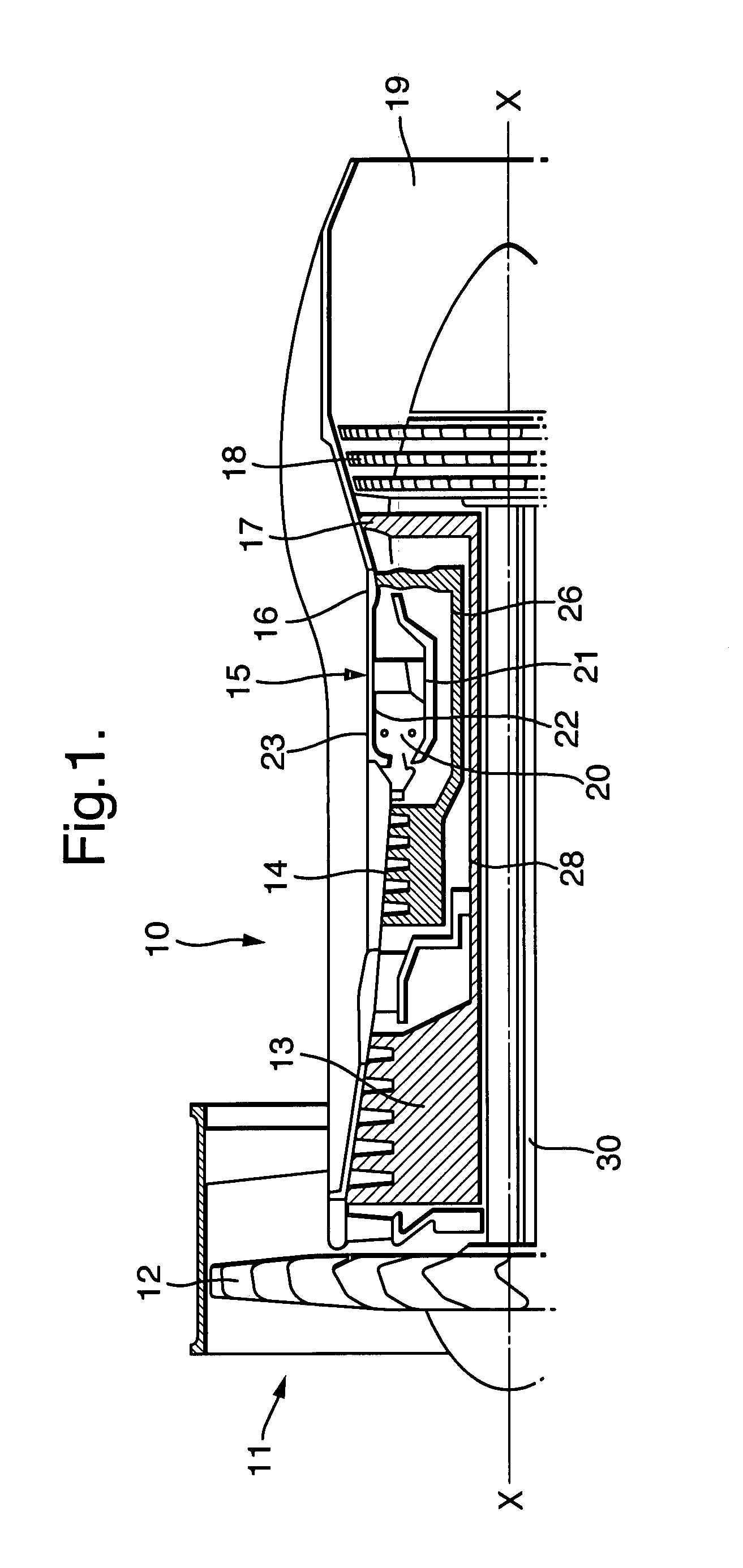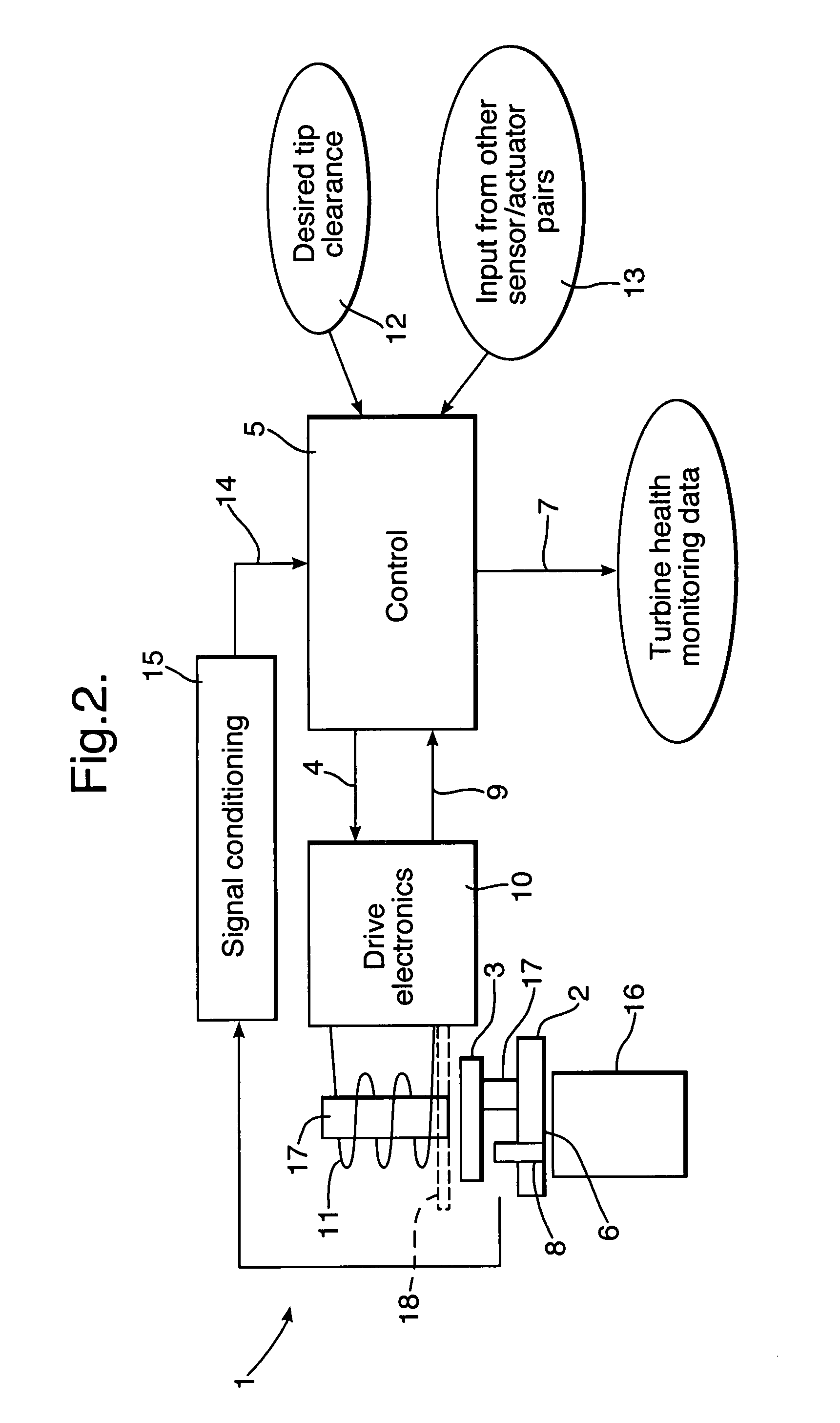Blade clearance arrangement
a technology for adjusting arrangements and blades, which is applied in the direction of machines/engines, mechanical equipment, liquid fuel engines, etc., can solve the problems of inconvenient adjustment of the gap, crude above thermal and pneumatic arrangements, and inability to meet the requirements of reducing the net radial force of the actuator, so as to achieve the effect of minimising the requirement of the actuator net radial for
- Summary
- Abstract
- Description
- Claims
- Application Information
AI Technical Summary
Benefits of technology
Problems solved by technology
Method used
Image
Examples
first embodiment
[0033]FIG. 3 illustrates a blade clearance arrangement in accordance with aspects of the present invention. Thus, as can be seen, an arrangement 21 has a blade 26 and a seal 22 secured to a moving armature 23 through latch connections 20. An actuator comprising a bridge member 27 and windings 19 act to cause movement of the armature 23 in the direction of arrow-heads A against a bias provided by a spring 24. As can be seen, the winding 19 and other actuator components to cause movement of the armature 23 are located outside of a casing 25 so that coolant air flows in the direction of arrow-head B act to limit the exposure temperature of the winding 19. The bridge members 27 extend across the casing 25 in order to cause further magnetic reaction movements of the armature 23.
[0034]It will be understood that typically there will be a number of blades 26 arranged in an assembly rotating about an axis lateral to FIG. 3. Furthermore, there may be a further turbine nozzle guide vane assemb...
third embodiment
[0041]In FIG. 5, a third embodiment is depicted in which the direction of the magnetic force created by the winding 19 is reversible such that an increase in electrical current in the winding causes the seal to move radially inwards rather than outwards or vice versa, dependent upon the desired operational configuration of the arrangement. This reversal in the magnetic force is achieved by appropriate design of the bridge members 27. As can be seen, an armature 53 associated through hooks 20 with a seal 22 is located at a position so that the bridge members 27 can create, as indicated above, radial inwards magnetic force as required. This magnetic force will typically be balanced by net radial inward forces caused by a pressure drop across the segment as described previously between air flows 28 and air flow C and the magnetic force created by the windings in the actuator assembly. As previously, this opposing force may be created through a piston effect or through a membrane in ord...
PUM
 Login to View More
Login to View More Abstract
Description
Claims
Application Information
 Login to View More
Login to View More - R&D
- Intellectual Property
- Life Sciences
- Materials
- Tech Scout
- Unparalleled Data Quality
- Higher Quality Content
- 60% Fewer Hallucinations
Browse by: Latest US Patents, China's latest patents, Technical Efficacy Thesaurus, Application Domain, Technology Topic, Popular Technical Reports.
© 2025 PatSnap. All rights reserved.Legal|Privacy policy|Modern Slavery Act Transparency Statement|Sitemap|About US| Contact US: help@patsnap.com



